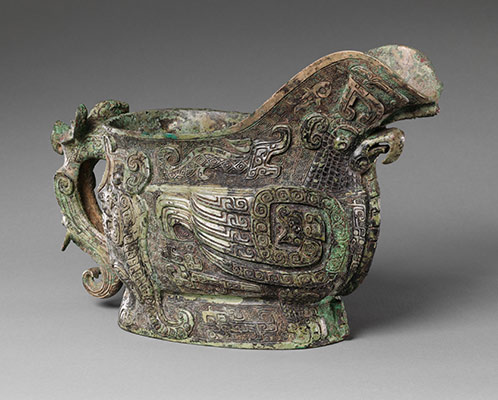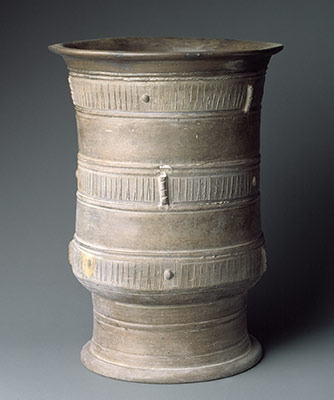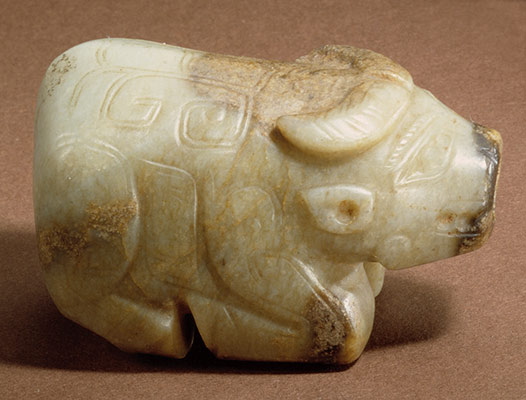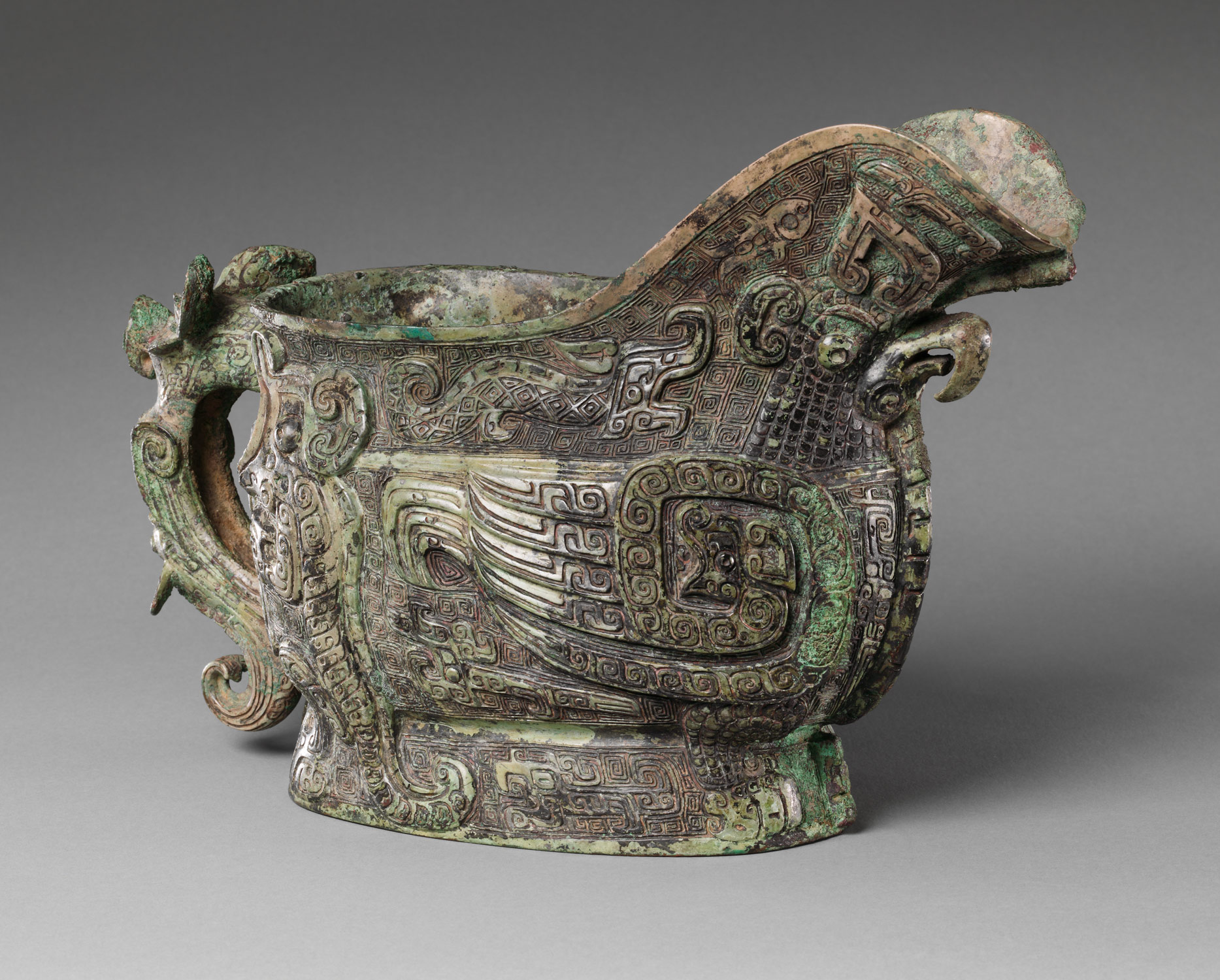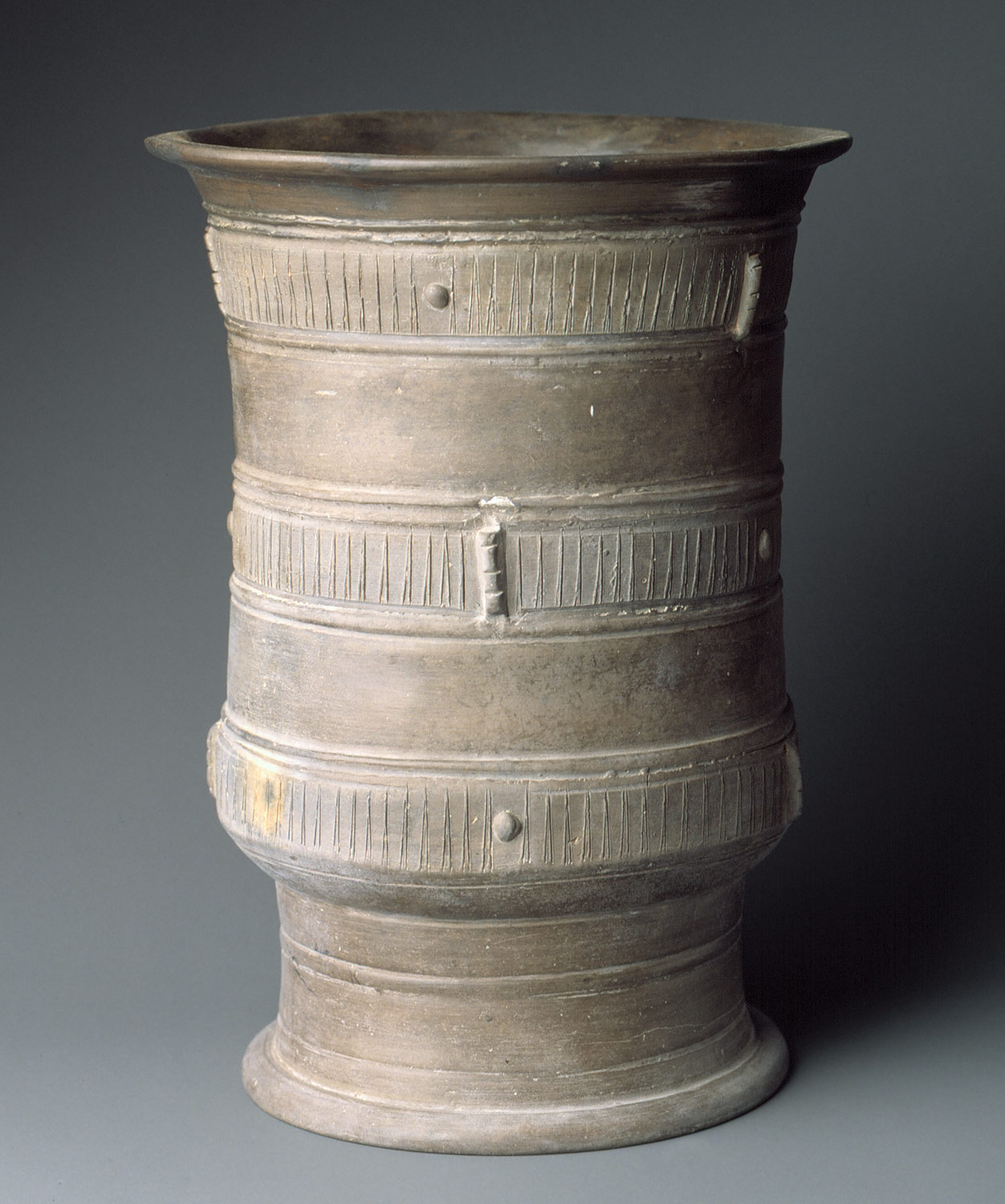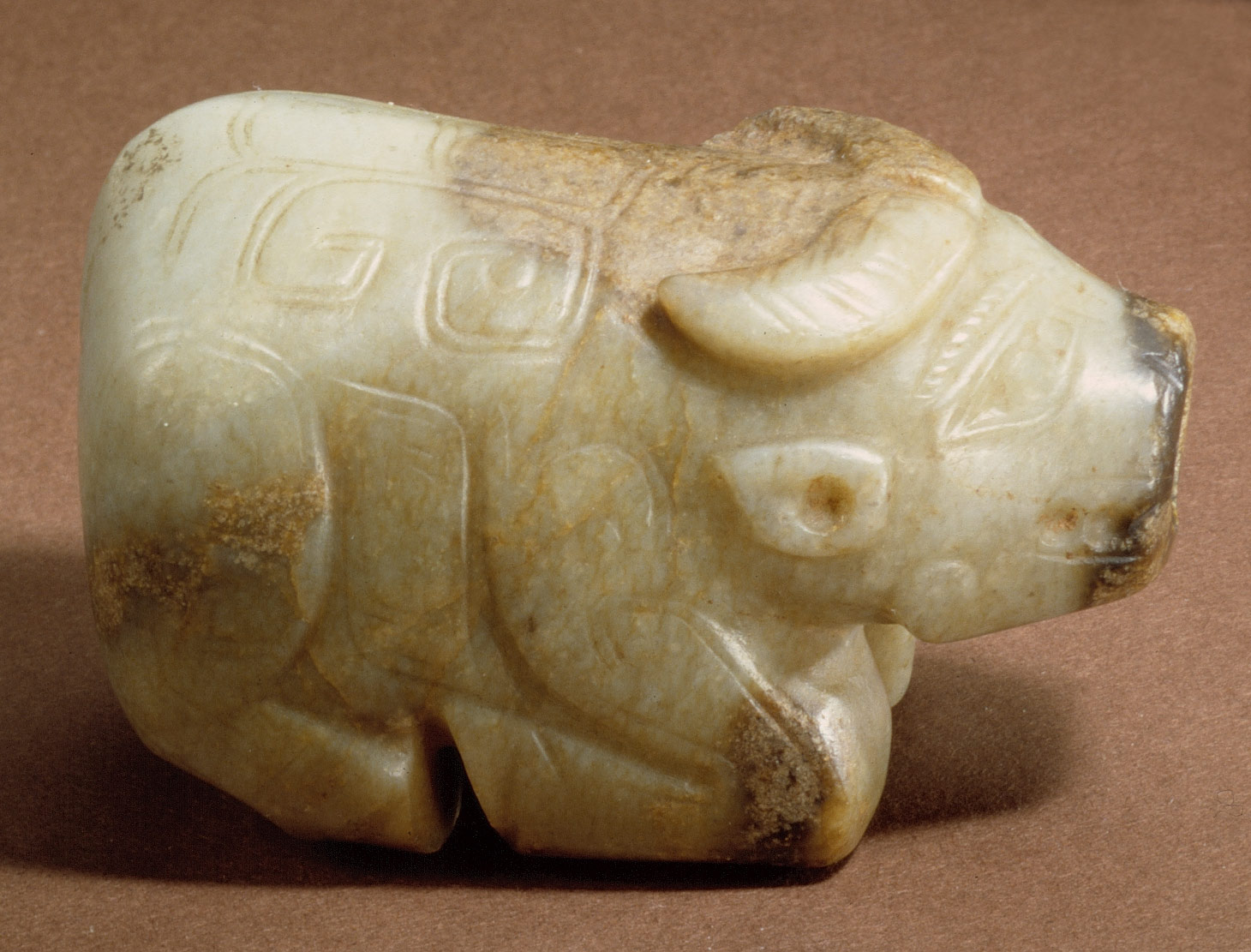Metalworking, especially in bronze, develops throughout China. Tools, bells, and jewelry are among the earliest metal objects made. During the Shang dynasty (ca. 1600–1046 B.C.), a method of casting bronze using multiple ceramic molds is invented, resulting in the production of extraordinary ritual vessels intricately decorated in relief. This method, unique in the ancient world, requires time and precision, and the control of the raw materials, labor, and technology is one of the prerogatives of the ruling Shang elite. Initially, Shang bronze workers imitated ceramic shapes and decoration; later in the dynasty, pottery begins to reflect the influence of bronze ware, albeit on a smaller scale. Jade carving is another innovation that artisans of the Shang dynasty develop into a sophisticated art.
China, 2000–1000 B.C.
Timeline
2000 B.C.
1750 B.C.
1750 B.C.
1500 B.C.
1500 B.C.
1250 B.C.
1250 B.C.
1000 B.C.
Overview
Key Events
-
ca. 2000 B.C.
Metals begin to be used throughout China to make knives, awls, bells, and jewelry.
-
ca. 1700–1500 B.C.
Erlitou near present-day Yanshi in Henan Province is an urban center with large temples and tombs. It may represent a center of the Xia dynasty (ca. 2100–1600 B.C.), cited in early histories as the first power to emerge in China. Erlitou is noted for its use of bronze, making this site an important precursor to the metalworking traditions of the later Shang dynasty.
-
ca. 1600 B.C.
The Shang dynasty controls a large area in northeast and north central China. Major sites include Zhengzhou, thought to be a cult center, and Anyang, the capital from ca. 1300–1046 B.C. This period is noted for its extraordinary bronze vessels used to hold wine and food in rituals linking rulers and their ancestors. They are cast using multiple ceramic molds, a technology that has no parallels elsewhere in the ancient world.
-
ca. 1200–1000 B.C.
Bronzes in the shape of humanoid figures (some lifesize) and heads, fragments of gold and jade, and elephant trunks discovered in 1986 at Sanxingdui in Sichuan Province illustrate an undocumented metalworking culture in the western part of China contemporaneous with the Shang in northeast and north central China.
-
1046 B.C.
The Zhou, a people living in the northwest, wrest control from the Shang, establishing the Zhou dynasty. The first part of the dynasty is known as the Western Zhou (1046–771 B.C.) after the location of the capital in the vicinity of present-day Xi’an. The Shujing (Book of Documents), one of the earliest histories, is written in part to legitimize the Zhou takeover of the Shang realm. Another classic, the Shijing (Book of Songs), contains poems and folk songs.
Citation
“China, 2000–1000 B.C.” In Heilbrunn Timeline of Art History. New York: The Metropolitan Museum of Art, 2000–. http://www.metmuseum.org/toah/ht/?period=03®ion=eac (October 2000)
